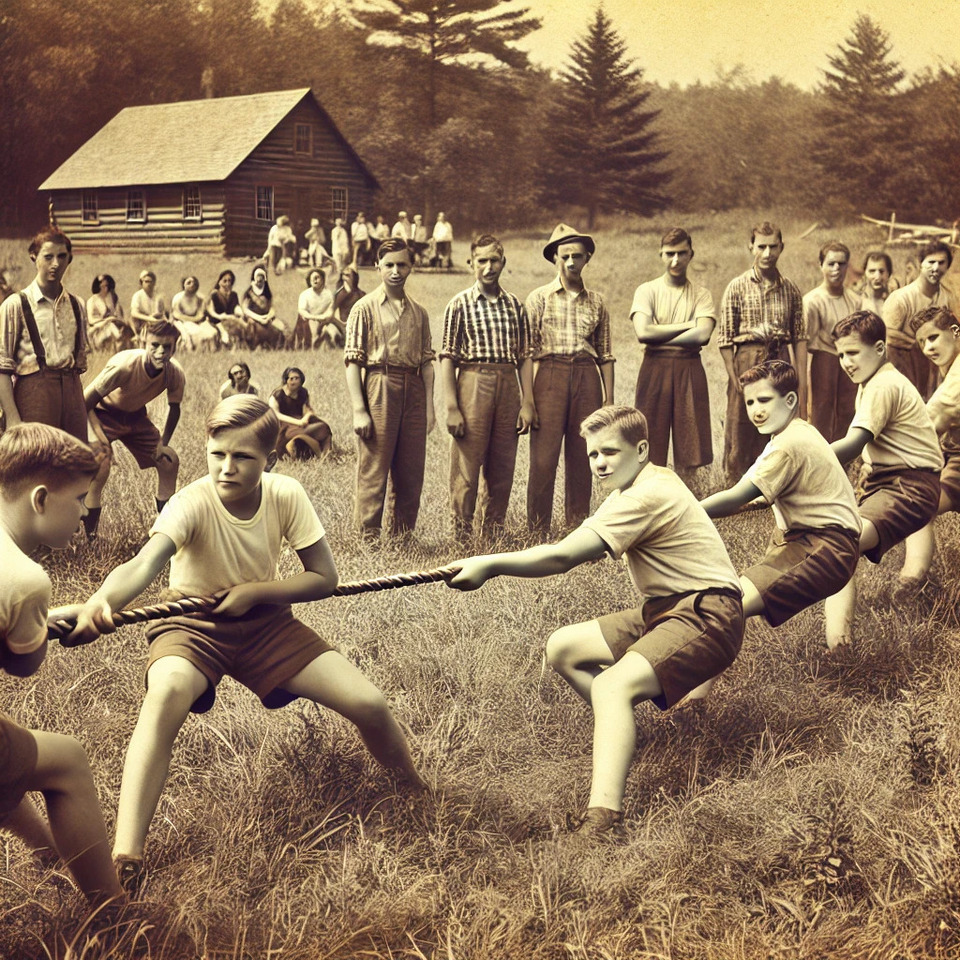The Robbers Cave Experiment and What It Teaches Us About Leadership
The Robbers Cave Experiment and What It Teaches Us About Leadership
By Mark Wager
Leadership is a complex set of skills required to bring together a group of individuals and turn them into a cohesive team. This is challenging because people have different personalities, motivations, and approaches to handling conflict. If these differences aren’t carefully managed, the team can easily fall apart.
In this week’s article, I want to explore the challenges of managing how people behave in groups. To do this, I’ll share with you a famous social experiment called the Robbers Cave Experiment.
What Happened at Robbers Cave?
The Robbers Cave Experiment took place at a summer camp in Oklahoma in the 1950s. It involved a group of 11- and 12-year-old boys over two weeks, designed to study what happens when people are split into groups. Muzafer Sherif and his team invited 22 boys to participate in the study, ensuring they were all from similar backgrounds—same socioeconomic class, religion, and ethnicity. This was done to eliminate external differences that might influence their behaviour.
The researchers divided the boys into two groups and, initially, didn’t tell them about the existence of the other group. What happened next unfolded in three distinct phases.
Phase One: Forming Groups
At the start, each group bonded independently. The boys engaged in activities like hiking, swimming, and team games, and they quickly formed strong identities. They even gave themselves names—The Eagles and The Rattlers—created flags, and came up with their own rules for group behaviour.
This isn’t surprising. We see this all the time in real life. People naturally gravitate towards groups, whether it’s a department at work, a sports team, or a social club. Group identity gives people a sense of belonging, which is a powerful motivator.
Phase Two: Conflict and Competition
Then, things took a turn. The two groups were introduced to each other, and the researchers set up a series of competitive activities like tug-of-war and baseball games. The winners got prizes, and the losers got nothing.
It didn’t take long for things to escalate. The boys started taunting each other, stealing each other’s flags, and even sabotaging each other’s efforts. What started as playful competition quickly turned into outright hostility.
Although this experiment involved young boys, it’s a dynamic that’s all too familiar in the workplace. How often do we see teams within the same organisation competing against each other instead of collaborating? Sales versus marketing, operations versus finance—it’s the same pattern. Poorly managed competition can tear a team apart.
Phase Three: Resolving Conflict
The final phase of the experiment is where things got really interesting. The researchers introduced tasks that neither group could accomplish alone. For example, the boys had to work together to fix a broken water supply and pool their money to rent a film for everyone to watch. These shared objectives—what the researchers called superordinate goals—forced the boys to cooperate.
And guess what? It worked. Gradually, the hostility melted away. By the end of the study, the two groups were sitting together on the bus home, chatting like old friends.
What Can Leaders Learn from This?
The Robbers Cave Experiment might have taken place in a summer camp decades ago, but the lessons it offers are timeless and universal. Let’s look at how this applies to leadership.
The Importance of Identity
In the first phase of the experiment, the boys naturally formed group identities. They felt connected, proud, and loyal to their group. As a leader, it’s essential to create a sense of identity within your team. People want to feel like they’re part of something bigger than themselves. They want to know their work matters.
But there’s a catch. When group identity becomes too strong, it can lead to an “us versus them” mentality. This is where silos form, and instead of collaborating with other teams, people start competing or clashing with them.
So, how do you strike the right balance? Encourage a broader organisational identity. Yes, celebrate your team’s successes, but make sure they see how their work contributes to the organisation’s overall mission. Remind them that everyone is on the same side.
Competition: A Double-Edged Sword
Competition can be a great motivator—when it’s done right. It pushes people to innovate, work harder, and achieve great things. But when handled poorly, it can create resentment, stress, and even sabotage, as we saw at Robbers Cave.
As a leader, you need to ask yourself: is the competition I’m encouraging constructive or destructive? For instance, rewarding individual performance without acknowledging team contributions might drive short-term results, but it can also erode trust and collaboration.
A better approach is to strike a balance between individual recognition and team rewards. Celebrate wins, but always tie them back to the bigger picture.
The Power of Shared Goals
The real breakthrough in the experiment came when the boys had to work together to achieve shared goals. This is where leaders can make the biggest impact. When you give your team a goal that’s bigger than any individual or department, it unites them. It gives them something to strive for together.
Think about your own workplace. Maybe your organisation is launching a new product or entering a new market. Perhaps it’s about improving customer satisfaction or achieving sustainability targets. Whatever it is, make sure everyone understands the goal and sees their role in achieving it.
But don’t stop there. Keep coming back to that goal. Reiterate it in meetings, celebrate progress, and remind people why it matters. A shared purpose is what turns a group of individuals into a unified team.
Resolving Conflict with Empathy
The researchers at Robbers Cave played a key role in resolving the boys’ conflict. They didn’t take sides or assign blame. Instead, they facilitated cooperation by giving the boys opportunities to work together.
As a leader, you’ll face conflict—it’s inevitable when people with different perspectives and priorities work together. The trick isn’t to avoid it but to manage it well.
Start by listening. Make sure everyone feels heard and understood. Then, look for ways to align their interests. Often, conflict arises because people feel like their needs are being overlooked. Show them how their goals can coexist with the team’s goals, and you’ll find the conflict often resolves itself.
Why This Matters Today
The Robbers Cave Experiment is more relevant than ever. In today’s workplace, we see “us versus them” dynamics everywhere—between departments, teams, or even remote and on-site workers. Leaders need to be the bridge-builders, the ones who bring people together.
This doesn’t mean ignoring differences or pretending conflicts don’t exist. It means embracing those differences and finding ways to align everyone’s efforts towards a shared goal. When you do that, you’re not just leading a team—you’re creating a culture of collaboration and trust.
The Robbers Cave Experiment isn’t just a story about boys at summer camp—it’s a masterclass in leadership. It shows us the power of identity, the risks of unchecked competition, and the incredible potential of shared goals.
If you want to be a better leader, start by asking yourself: how can I create a sense of purpose and identity within my team? How can I manage competition so it drives innovation without causing division? And most importantly, how can I unite my team around goals that inspire them to work together?
Leadership isn’t about having all the answers. It’s about creating the conditions where people can thrive—together. And that’s a lesson we can all take from Robbers Cave.
Posted: Monday 20 January 2025

